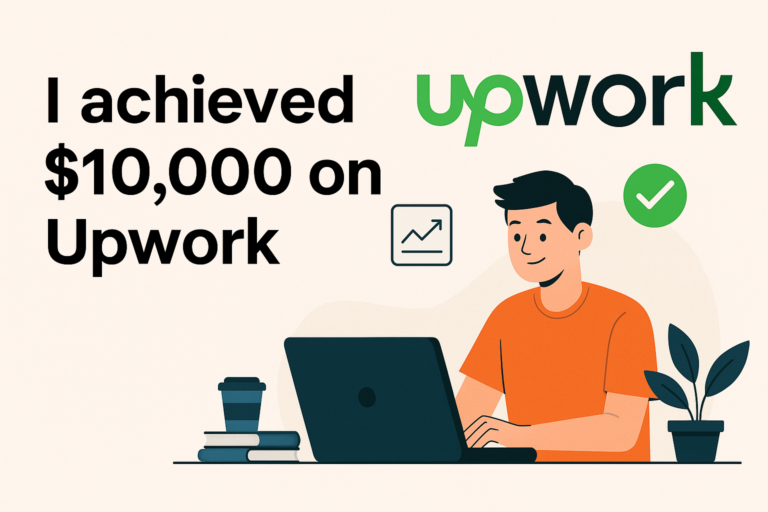In the competitive world of freelancing and agency work, one thing remains constant: the need for a solid portfolio. Whether you’re just starting or you’re a seasoned professional, a portfolio serves as your visual resume, demonstrating your capabilities, achievements, and unique value to potential clients or employers. Many ask, “Is a portfolio really necessary?” The short answer is yes—and here’s why.
Why Is a Portfolio Crucial in Freelancing?
Freelancers often work in a wide range of industries, from graphic design to writing, web development, and digital marketing. In such fields, the importance of showcasing your work cannot be overstated. Clients don’t just want to hear about what you can do—they want to see it. A portfolio is a tangible representation of your skills, expertise, and the value you bring to the table.
Demonstrates Credibility and Skill
A portfolio isn’t just about listing the projects you’ve worked on. It’s about showing, in a very concrete way, that you can deliver high-quality work. For freelancers, credibility is everything. A well-curated portfolio can set you apart from other freelancers who may have similar skill sets. It shows prospective clients what you’re capable of and allows them to visualize the results you can provide.
Builds Trust with Clients
Freelancers often work remotely, and clients may never meet you face-to-face. Building trust in a virtual working environment can be challenging, but a portfolio goes a long way in making that connection. When potential clients see real examples of your work and the results you’ve achieved for others, they’re more likely to trust you with their own projects. Trust leads to quicker decisions and can be the deciding factor between you and a competitor.
Showcases Versatility
Freelancers often juggle different types of projects. Your portfolio allows you to showcase a wide variety of work. You may have done everything from logo design to complete website overhauls. With a portfolio, you can highlight the diversity of your skills and the different kinds of work you’re capable of, catering to a broader range of clients.
Provides a Competitive Edge
In freelancing, the competition is fierce. You are not just competing locally; you are up against freelancers from all over the world. A portfolio helps you stand out. It offers proof of your ability to deliver and helps you market yourself more effectively. Rather than just claiming you can do the job, a portfolio proves it, making you a more attractive option to potential clients.
The Role of a Portfolio in Agency Success
Agencies also benefit greatly from having a comprehensive portfolio. Whether you’re offering digital marketing services, web design, or any other creative solution, the importance of a portfolio in securing clients cannot be underestimated.
Demonstrates the Agency’s Collective Expertise
While freelancers rely on a portfolio to showcase personal expertise, an agency’s portfolio reflects the combined efforts of a team. Agencies often have different departments or specializations, and a portfolio can bring together the best work from each area to show potential clients the full breadth of the agency’s capabilities.
Reinforces Brand Reputation
For agencies, brand reputation is crucial. A portfolio filled with success stories, case studies, and impressive visuals can help reinforce the agency’s market position. Clients often choose agencies that have proven themselves in their industry, and a robust portfolio is one of the best ways to show off an impressive track record.
Helps Secure Bigger Projects
In many industries, agencies are competing for large-scale projects that require significant investments. Corporations and larger businesses want to know that the agency they hire has the experience and capability to handle complex projects. A detailed portfolio with case studies and testimonials can be the key to landing those bigger contracts. It assures prospective clients that the agency has the necessary skills and resources.
Attracts the Right Clients
Just as a freelancer’s portfolio helps attract the right kind of clients, an agency’s portfolio ensures that they’re approached by businesses that need the specific services they offer. Agencies can highlight their best work in industries they specialize in, ensuring they attract clients who are a good fit.
Examples of Showcasing Your Portfolio
Personal Website
Having a personal website dedicated to your portfolio gives you complete control over how your work is presented. It acts as a hub for potential clients to learn more about you, your services, and how to contact you.
Portfolio Page: Display your best work through thumbnails that link to detailed case studies or project descriptions.
Case Studies: Add depth by explaining the process, challenges, and results for each project. Include metrics and measurable outcomes where possible.
Interactive Elements: Integrate animations, before-and-after sliders, or interactive features to demonstrate your skills in web design, development, or UX.
Freelance Platforms
Platforms like Upwork and Fiverr make it easy to showcase your work to potential clients:
Upwork: Include detailed descriptions of your past work, categorize by skill, and gather client reviews to build trust.
Fiverr: Use the gallery feature in your gig listings to show examples of your work and results.
Specialized Platforms
For creatives, platforms like Behance, Dribbble, or Vimeo can showcase a wider variety of your work:
Behance: Ideal for designers, illustrators, and photographers. Showcase each project with visuals, descriptions, and tags to improve visibility.
Dribbble: Share “shots” or small previews of your work to tease full projects or display works-in-progress.
YouTube: Video creators can build portfolios of their best work, categorizing by type or industry, and even embedding the videos into other platforms or websites.
GitHub for Developers
For developers, showcasing your code and projects on GitHub is essential:
Open Source Projects: Let clients and recruiters see your code in action through your repositories.
Documentation: Provide detailed documentation to guide others through your process.
5. Social Media Portfolios
Platforms like Instagram and Pinterest are powerful for creative professionals to reach a broader audience:
Instagram: Post snippets of your work in a consistent visual style to attract attention.
Pinterest: Curate boards of your completed projects, organizing them by type or industry.
How to Build an Effective Portfolio
Whether you’re a freelancer or running an agency, creating an effective portfolio requires thought and careful planning. Here are some key steps to consider:
Select Your Best Work: Don’t overcrowd your portfolio with every project you’ve ever worked on. Pick the projects that best represent your skills and align with the kind of work you want to continue doing.
Include Case Studies and Results: Clients aren’t just interested in pretty pictures; they want to see how your work has benefited others. If possible, include case studies with tangible results.
Update Regularly: Make a habit of updating your portfolio with your latest and most impressive work.
Use Testimonials: Positive feedback from past clients can significantly boost trust in your abilities. Integrate these testimonials into your portfolio.
Portfolio Importance for Beginners
If you’re just starting out, you might feel discouraged if you don’t have a vast portfolio. However, even beginners can build an effective portfolio by showcasing personal projects, internships, or volunteer work. Focus on the quality of your work rather than the quantity. Over time, as you gain more experience, your portfolio will grow and become a powerful tool for attracting clients.
Ready to Showcase Your Talent and Land More Projects?
Whether you’re a freelancer or an agency, your portfolio is the key to standing out and securing more clients. Start building your impressive portfolio today and watch your career or business thrive. Need help showcasing your work or crafting the perfect portfolio? Contact me now for expert guidance and personalized tips to make your portfolio shine!
How often should I update my portfolio?
It’s recommended to update your portfolio at least once every six months or whenever you complete a significant project. Regular updates keep it fresh and relevant.
Is a portfolio necessary for all types of freelancers?
While some freelancers may rely more heavily on their portfolio than others, having one is always beneficial. Even for writers or consultants, having samples of work or case studies can help attract clients.
What should I include in my portfolio if I’m just starting out?
If you’re just beginning, include personal projects, volunteer work, or internships. Focus on showcasing the quality of your work rather than the number of projects.
Can agencies benefit from video portfolios?
Yes, agencies can create video portfolios to showcase their work, client testimonials, and case studies. Videos are engaging and can effectively convey the impact of their services.
Should I have different portfolios for different types of work?
If you offer a range of services, it can be helpful to create separate portfolios for each. This makes it easier for potential clients to see the specific skills that match their needs.
How do I make my portfolio stand out?
Make sure your portfolio is visually appealing, easy to navigate, and filled with high-quality work. Including case studies, results, and client testimonials can make it more impactful.
If you're looking for any services regarding Digital Marketing or Website Developement, Please Contact now.






Leave a Comment